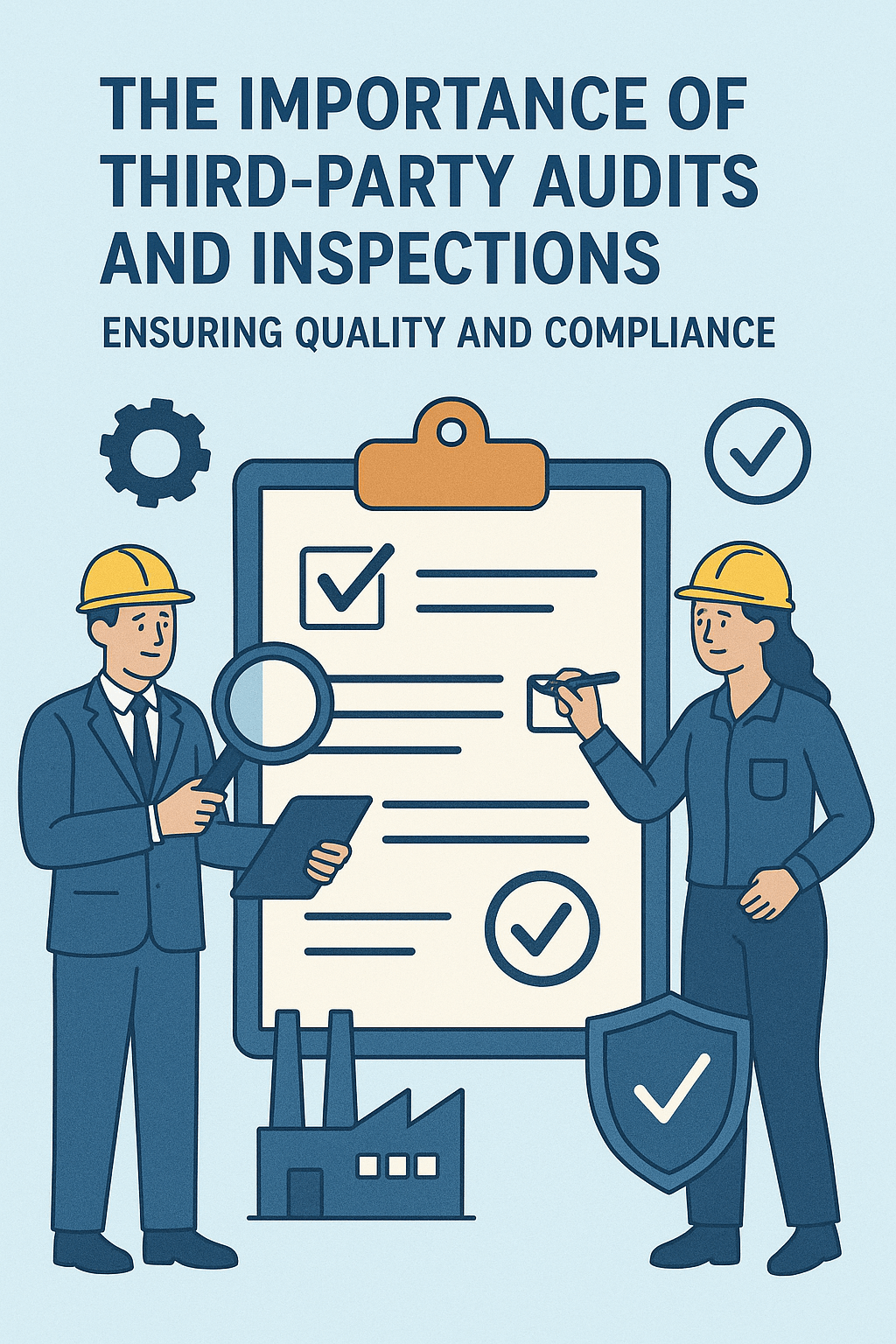The Importance of Third-Party Audits and Inspections: Ensuring Quality and Compliance
In today’s complex business landscape, organizations are increasingly relying on third-party audits and inspections to ensure quality, compliance, and risk management. But what exactly are third-party audits and inspections, and why are they so crucial? In this blog, we’ll explore the benefits, types, and best practices of third-party audits and inspections.
What are Third-Party Audits and Inspections?
A third-party audit or inspection is an independent evaluation of an organization’s processes, systems, or products by an external party. This external party is not affiliated with the organization being audited, ensuring an unbiased and objective assessment. Third-party audits and inspections can be conducted for various purposes, including:
– Quality Management: To ensure compliance with quality standards, such as ISO 9001.
– Regulatory Compliance: To verify adherence to regulatory requirements, such as food safety or environmental regulations.
– Risk Management: To identify potential risks and assess their impact on the organization.
Benefits of Third-Party Audits and Inspections
1. Improved Quality and Reliability: Third-party audits and inspections help organizations identify areas for improvement, ensuring that products or services meet the required standards.
2. Enhanced Credibility: A third-party audit or inspection can increase stakeholder confidence in an organization’s products or services.
3. Risk Reduction: By identifying potential risks, organizations can take proactive measures to mitigate them, reducing the likelihood of costly errors or reputational damage.
4. Compliance: Third-party audits and inspections help organizations ensure compliance with regulatory requirements, reducing the risk of fines or penalties.
5. Cost Savings: By identifying inefficiencies and areas for improvement, organizations can reduce costs and improve productivity.
Types of Third-Party Audits and Inspections
1. Quality Audits: These audits assess an organization’s quality management system, ensuring compliance with standards such as ISO 9001.
2. Regulatory Audits: These audits verify an organization’s compliance with regulatory requirements, such as food safety or environmental regulations.
3. Supply Chain Audits: These audits assess the quality and reliability of an organization’s suppliers and vendors.
4. Product Inspections: These inspections verify the quality and safety of products, ensuring compliance with regulatory requirements.
Best Practices for Third-Party Audits and Inspections
1. Choose a Reputable Auditor: Select an auditor or inspection body with expertise in your industry and a proven track record.
2. Prepare Thoroughly: Ensure that your organization is prepared for the audit or inspection, with all necessary documentation and records in place.
3. Foster a Culture of Compliance: Encourage a culture of compliance within your organization, with all employees understanding the importance of quality and regulatory adherence.
4. Act on Findings: Address any findings or recommendations from the audit or inspection, implementing corrective actions to improve quality and compliance.
Conclusion
Third-party audits and inspections are essential tools for ensuring quality, compliance, and risk management in today’s complex business landscape. By understanding the benefits, types, and best practices of third-party audits and inspections, organizations can improve their products, services, and processes, while reducing risks and costs. Whether you’re seeking to improve quality, ensure regulatory compliance, or mitigate risks, a third-party audit or inspection can provide valuable insights and recommendations to help you achieve your goals.


